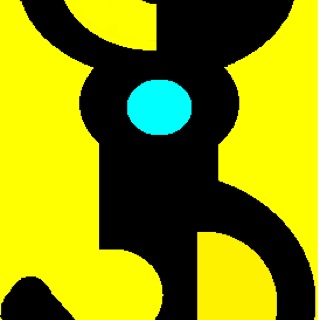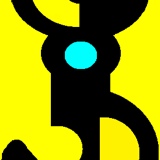Information
-
Audit Title
-
Client / Site
-
Conducted on
-
Audit prepared by
- Donald Kempf
-
Location
Task Information
-
Job number
-
Purchase order number
-
Work order number
-
SCR Tag Number
-
Visitor pass number
-
Time on site
-
Any delays in gaining access to the site
-
Delay details
-
Pic of delay
JOB SAFETY ANALYSIS
-
Working at a height
-
Working at heights permit number
-
Controls to be used
- use the Crow's nest
- use an EWP
- access via a ladder
- other
- N/A
- forklift and cage
-
Harness required?
-
Working on or near live electrical power?
-
Controls to be used for electrical work
- isolate on the Crane as required
- isolate and lock out
- isolate at DB and lock out
- testing live, follow std SOP
- N/A
-
Traffic and staff in the area?
-
Controls to be used
- advise staff in the work area
- place bollards
- Barricade the area
- other
- work conducted outside std hours
-
Loud noise in the work area.
-
Hearing protection to be worn
-
Spare Ear plugs should be carried upon you when working aloft.
-
Hazardous chemicals.
-
Controls to be used.
-
Any other comments
HOIST
-
Hoist
hoist
-
Hoist type
-
Hoist Manufacture
-
Photo of Hoist
-
MRC Maximum Rated Capacity
-
Height of lift
-
Serial Number
-
Motors / drives
-
Working height limit adjustment
- Checked No Adjustment made
- Adjustment made
- Adjustment required
- Repairs required
- N/A
-
Working height limit switches
-
Transmission noise and or vibration
-
Couplings
-
Free from any fluid leaks.
-
Overload pressure setting.
-
Drum is free of any back lash
-
Wire rope condition
-
Wire Rope Guide
-
-
Hook and safety catch
-
Wire rope anchor point
-
Mountings
-
Sheaves condition
-
Overall Condition
-
Hoist Manufacture
-
Photo of the Hoist
-
MRC Maximum Rated Capacity
-
Working height limit adjustment
- Checked No Adjustment made
- Adjustment made
- Adjustment required
- Repairs required
- N/A
-
Working height limit switches
-
Height of lift
-
Motors
-
Serial Number
-
Motors / drives
-
Drum free of back lash
-
Wire rope condition
-
Hook and safety catch
-
Wire rope anchor point
-
Transmission noise and vibration
-
Mountings
-
Sheaves condition
-
Overall Condition
-
Hoist Manufacture
-
Photo of the Hoist.
-
MRC Maximum Rated Capacity
-
Chain condition
-
Height of lift
-
Serial Number
-
Hook and safety catch
-
Chain bag condition
-
Gypsy gear condition
-
Gypsy gear free from any back lash.
-
Chain Anchor point safe
-
Air gap
- Checked No Adjustment made
- Adjustment made
- Adjustment required
- Repairs required
- N/A
-
Mountings
-
Overall Condition
-
Hoist Manufacture
-
Photo of the Hoist
-
MRC Maximum Rated Capacity
-
Height of lift
-
Serial Number
-
Chain condition
-
Hook and safety catch
-
Gypsy gear condition
-
Gypsy gear free from any back lash.
-
Mountings
-
Overall Condition
-
Hoist Manufacture
-
Photo of the Hoist
-
MRC Maximum Rated Capacity
-
Height of lift
-
Serial Number
-
Chain condition
-
Hook and safety catch
-
Gypsy gear condition
-
Gypsy gear free from any back lash.
-
Chain Anchor point safe
-
Mountings
-
Overall Condition
CROSS TRAVEL
-
Cross Travel Trolley
-
Trolley type
- Electric Trolley
- Continuous Chan Drive
- Push Pull Trolley
- fixed anchor point
-
Anchor point
-
Mountings
-
Overall visual wear condition
-
Pic of wheels
-
Anchor point
-
Fit to rail
-
Buffers
-
Mountings
-
Overall visual wear condition
-
Pic of wheels
-
Continuous chain condition
-
Gear condition
-
Fit to rail
-
Buffers
-
Anchor point
-
Mountings
-
Overall visual wear condition
-
Pic of wheels
-
Motors
-
Air gap
- Checked No Adjustment made
- Adjustment made
- Adjustment required
- Repairs required
- N/A
-
Transmission free from noises and vibrations
-
Gearboxes free from oil leaks
-
Gears and keyways
-
Limit switches and control sensors
-
Couplings
-
Mountings
-
Fit to rail
-
Buffers
-
Anchor point
-
Overall visual wear condition
LONG TRAVEL
-
Long travel
-
Long travel wheels
-
Pic of wheels
-
Overall condition of the long travel wheels.
-
Transmission is free from noises and vibrations.
-
Couplings.
-
Gears and key ways.
-
Motors.
-
Air Gap
- Checked No Adjustment made
- Adjustment made
- Adjustment required
- Repairs required
- N/A
-
All gear boxes free from Oil leaks
-
Mountings
-
Buffers and end stops
-
Limits and speed control sensors
ELECTRICAL
-
Energy supply
-
Air fittings are in a sound condition.
-
Air Supply is dry
-
Air Supply lubricator operational
-
Air pressure is set to the Hoists maximum setting.
-
Air supply volume is adequate for the Hoist
-
Pump condition
-
Pump is free from any oil leaks
-
Hydraulic hoses in good condition
-
Hoses are all held securely.
-
Hydraulic oil level.
-
Hydraulic oil level at highest stowed level.
-
Hydraulic oil is clear and free of metal flake
-
Hydraulic filter condition
-
Date the filter was last replaced
-
Control box condition
-
Control box
-
Contactors
-
Pendant / Radio TX unit
-
Isolators
-
Isolator signage
-
Live rail signage present
-
Energy Supply system
- Bus bar system
- Reeled cable system
- Catenary system
- Double ring system
- hydraulic
-
Hard drawn wire wear
-
Double ring wear
-
Cable condition
-
Tow arm
-
trolley condition
-
Cable condition
-
Cable condition
-
tension and reaction time
-
cable tray area clean
-
Pic of collector heads and bus bar
-
Collector Arms
-
Bus bar Signage
-
Earth supply fitted
-
Advise fitting of earth supply to meet current Australian standards.
STRUCTURAL CONDITION
Suitable for continued safe use.
-
Year of manufacture or the year of the last major inspection
-
Hoist is over 10 years old?
-
Has the Hoist had a Major Inspection
-
7.4 ASSESSMENT FOR SUITABILITY FOR CONTINUED SAFE USE
7.4.1 Assessment for continued safe operation
Cranes that have reached the end of their design life shall be assessed to ensure their suitability for continued use. Where the design life is unknown, this assessment should be carried out at 10-year intervals for the mechanical components and at 25-year intervals for the structure.
The assessment shall also be undertaken where maintenance records indicate repeated failures of any critical component or where the crane has been subjected to an overload greater than 10% of the safe working load for either or both the structure and hoist.
Persons carrying out such an assessment should be supervised by a professional engineer.
NOTES.
1. A cranes design life may not be the same as its actual life and depends on such factors as its classification, usage and its operating environment.
2. Devices are available to record the actual usage of a crane to enable assessment of its remaining design life. Guidance on such devices is given in ISO 12452, 1.
3. Appendix 1 provides guidance on items that may be included in such an assessment.
As part of the assessment, a major inspection of the crane may be necessary (see Clause 7.3.4). -
Please note the working life of a crane is as per the manufacturer specifications or a maximum of 10 years of service. Whichever is the lesser
-
Is the crane in a suitable condition to return into operation safely until the next regular inspection in 12 weeks?
-
The Crane has been removed from service and is tagged out.
-
Any items that may require immediate attention.
-
List of urgent faults.
-
Will any of these faults deem the crane unsuitable to use until repaired.
-
Crane has been tagged "out of service"
-
Is the crane fitted with a load usage monitoring device?
-
Is the crane operating within it's designed duty cycle
-
The Current Australian Standards require the monitoring of the duty cycle of the crane, calculated against the loads it has carried. This device is available as an aftermarket install.
-
Is the crane structure over 25 years' old
-
Has the Crane Structure had a Major Inspection
-
Is the Crane Structure in Sound Condition?
-
A Crane has a structural Service life of 25 years maximum. After this period the Crane must be removed from service and full dismantled, internally inspected and repaired and modified to comply with the latest Australian standards or just scrapped.
-
7.4 ASSESSMENT FOR SUITABILITY FOR CONTINUED SAFE USE
7.4.1 Assessment for continued safe operation
Cranes that have reached the end of their design life shall be assessed to ensure their suitability for continued use. Where the design life is unknown, this assessment should be carried out at 10-year intervals for the mechanical components and at 25-year intervals for the structure.
The assessment shall also be undertaken where maintenance records indicate repeated failures of any critical component or where the crane has been subjected to an overload greater than 10% of the safe working load for either or both the structure and hoist.
Persons carrying out such an assessment should be supervised by a professional engineer.
NOTES.
1. A cranes design life may not be the same as its actual life and depends on such factors as its classification, usage, and its operating environment.
2. Devices are available to record the actual usage of a crane to enable assessment of its remaining design life. Guidance on such devices is given in ISO 12452, 1.
3. Appendix 1 provides guidance on items that may be included in such an assessment.
As part of the assessment, a major inspection of the crane may be necessary (see Clause 7.3.4).
Structure
-
Runway
- Billet rail
- Train rail
- Mono rail
- Portal rail
- Semi Portal rail
- Fixed point anchor.
-
Double nuts fitted.
-
Welds secure
-
Rail mushroomed
-
Joints smooth
-
Joints suitable for duty cycle rating. <br>I.e. On a 45 deg angle for above m4 operation.
-
Beam is free from any signs of structural deformation?
-
is the crane suitable to be returned into continued service
-
Locked out and removed from service
-
All structural bolts are tight and corrosion free?
-
All mating flanges are free from corrosion
-
Protective coatings are in a sound and serviceable condition?
-
Building structure in sound condition
-
All foundations are in a good condition?
-
GENERAL ITEMS
-
Signage
-
Compass signage
-
Crow's nest / service access
-
Access ladder condition
-
Any comments
-
Any sketch that may help?
-
Inspection technician to sign. All work has been done to comply with the relevant Australian Standards.
-
Next routine inspection and service due.
-
Time off site
-
Pic of the Attendance / Service book.
-
Customer to sign












